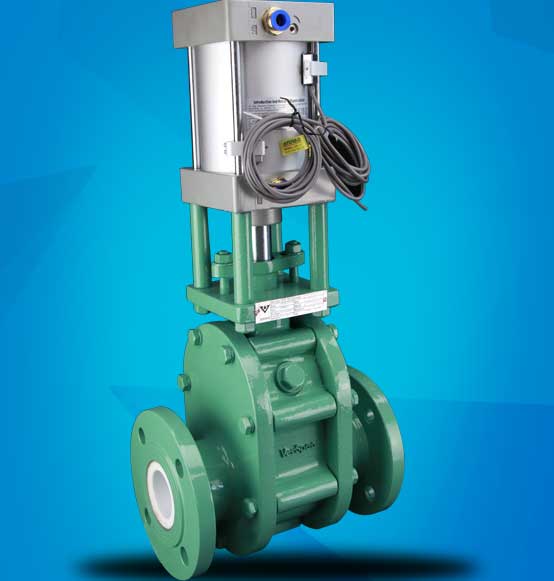Electric Actuator Valve

Electric actuator valve
Torque is the rotational force an actuator generates to close a rotational valve. Electric actuators can generate this force by transmitting it to the output shaft and then the valve stem. When pressure is applied to the valve stem, the valve's orifice opens or closes.
What is an electric actuator used for?
An electric actuator is a mechanical device used to convert electricity into kinetic energy in either a single linear or rotary motion. It automates damper or valve in order to increase process efficiency and complexity.
What are electrically operated control valves?
Electric Control Valves are electronically powered devices that regulate the flow of liquid, semi-liquid, or gas by closing, partially closing, or opening the passageway.
How do I test my electric actuator?
To test a linear actuator's current draw, simply connect a multimeter in series with one of the leads of a powered linear actuator, and watch the amperage reading as you extend/retract the rod. Based on the reading, you can determine a power supply that will be able to handle that current draw.
What is the difference between control valve and actuator?
The actuator is the next logical area of interest. The operation of a control valve involves positioning its movable part (the plug, ball or vane) relative to the stationary seat of the valve. The purpose of the valve actuator is to accurately locate the valve plug in a position dictated by the control signal.
What are the types of valve actuators?
There are 4 basic types of valve actuators: pneumatic actuators, hydraulic actuators, electro-hydraulic, and electric actuators.
Where are actuators used?
Actuators are often used in manufacturing or industrial applications, and in devices such as pumps, switches, and valves. They have also been used in innovative adaptive structures. Motion is usually created by air, electricity, or liquid. The types of motion created by actuators are linear, rotary, or oscillatory.
What are examples of actuators?
Examples of actuators
- Comb drive.
- Digital micromirror device.
- Electric motor.
- Electroactive polymer.
- Hydraulic cylinder.
- Piezoelectric actuator.
- Pneumatic actuator.
- Screw jack.
What is another name for an actuator?
| control | controller |
|---|---|
| instrument panel | knob |
| lever | mechanism |
| switch | brake |
| device | governor |
What are the three types of valve control?
There are three primary types of control valve trim: Snap Trim (also referred to as Quick-Opening trim) Nominal Trim (also referred to as Linear trim) Equal Percentage Trim.
What are the two types of control valve?
The two classes of control valves are Linear Motion and Rotary Motion.
How do you test an actuator valve?
Once air is applied to the actuator. Wait for the valve to reach its max travel. Position once the
What happens when an actuator fails?
Actuators are designed and manufactured to the most exact tolerances possible, and every product must be tested and produced with the utmost care. A failure could result in a catastrophic spill, explosion, chemical release, environmental contamination, power loss, property damage, injury, or even loss of life.
What causes actuator to stop working?
Normally, failure is caused by application errors, such as side loading, incorrect wiring, poor mounting fixity, excessive loading, and exceeding duty cycle.
What happens when an actuator goes out?
The most common symptom of the A/C Actuator going bad or when the Blend Door is stuck is when you feel inconsistent air flow coming in. The desired air you want whether it be hot or cold, is being diverted incorrectly, so you are not getting a consistent temperature out of the A/C system.
Which actuator is best for control valve?
Electric actuators – multi-turn – These types of valves are among the most common and the most dependable. They're capable of quickly operating some of the largest valves, and they're powered by a single or three-phased electric motor that drives a combination of level gears and spurs.
Is an actuator the same as a solenoid?
Applied Voltage: Solenoids require alternating current (AC) voltage for activation and motion because they use a magnetic field for operation, and only the AC voltage can create the magnetic field. Linear actuators tend to use DC motors, which cannot operate with AC voltage.
How do electric solenoid valves work?
Solenoid valves consist of a coil, plunger and sleeve assembly. In normally closed valves, a plunger return spring holds the plunger against the orifice and prevents flow. Once the solenoid coil is energized, the resultant magnetic field raises the plunger, enabling flow.
Which actuator is used in HVAC system?
It is the job of the AC actuator to control the opening and closing of the airflow in response to the thermostat, thus controlling air movement and allowing cool air to blow down the ducts and into the house.
How many types of actuators are there?
Types of Actuators | Linear, Electric, Magnetic, Pneumatic, Rotary, Hydraulic - Creative Motion Control.











Post a Comment for "Electric Actuator Valve"